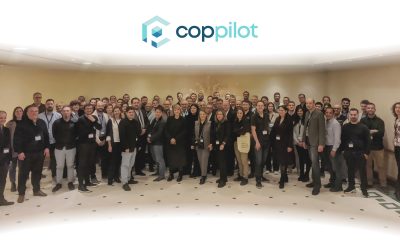The GSM Association represents the interests of mobile operators worldwide –nearly 800 operators with almost 300 companies in the mobile ecosystem–, including device makers, software companies, equipment providers and internet companies, as well as public and private organisations linked to the sector.
Also producing industry-leading events, such as the Mobile World Congress, the GSMA announced today the launch of the ‘IoT Big Data API Directory’.
The new GSMA directory, which is the first of its kind, will make harmonised data sets from multiple sources worldwide available to developers and third parties, enabling them to create innovative IoT services.
Designed to encourage a common approach to harmonised data sharing, driving the Internet of Things to its full potential, the Directory is focused on easing the development of new projects across sectors like transport, the environment and smart cities.
Global mobile operators China Mobile, China Unicom, KT Corporation, Orange and Telefónica have already implemented solutions enabling them to share harmonised IoT data.
As the press release by the GSMA points out, the IoT Big Data API Directory provides details of IoT and context data sets covering machines, devices, automotive, roads, environment, smart home and agriculture. All of the data sets are harmonised and are available on github. The adoption of a common approach to data sharing will be lowering costs and creating opportunities for IoT developers, data brokers and data providers.
This new initiative shares the same open vision that FIWARE has been spreading, regarding multi-sided markets: “The IoT generates a huge amount of data that is currently retained in vertical silos. However, in order for the IoT to reach its full potential, this data needs to be released and made available to developers and third parties,” said Alex Sinclair, Chief Technology Officer, GSMA. “A common, collaborative and interoperable approach to big data will remove the commercial and technical barriers to capitalising on the IoT opportunity and usher in a new era of IoT solutions that will help the market to scale. We encourage mobile operators to collaborate with the wider industry to benefit from the big data opportunity.”
Mobile Operators and the application of FIWARE components to IoT Big Data architecture
In its recently released document, the ‘IoT Big Data Framework’, the GSMA define and propose how mobile operators may approach the delivery of IoT Big Data services. Designed to enable a collaborative framework within the mobile industry, delivering Big Data services and third-party application developers, FIWARE has an important role in it.
The annexes A and B provide information about the application of FIWARE components to IoT Big Data architecture, as well as background information about FIWARE NGSI. FIWARE NGSIv2 interface is specified as the recommended standard for certain interfaces and proposed for others along the whole document.
Although much of the IoT data will be collected by a range of data provider partners, Mobile operators are key participants in the delivery of an IoT Big Data ecosystem. Addressing this situation, the document provides a comprehensive framework for the delivery of IoT Big Data services, recognising the many different approaches towards the services that are offered and the technology choices that are made, and proposing a valid architecture that offers a great level of flexibility, allowing IoT Big Data services to be offered in multiple ways.
IoT Big Data Demonstrations at Mobile World Congress 2017, powered by FIWARE
 Following the work that the GSMA is doing on Big Data, two showcases will be demonstrating its practical application within IoT applications and services.
Following the work that the GSMA is doing on Big Data, two showcases will be demonstrating its practical application within IoT applications and services.
At the Mobile World Congress 2017 Innovation City (Hall 4 Stand 4A30) in Barcelona, Telefónica and Everimpact (powered by FIWARE) will be demonstrating an environmental monitoring system, showing how CO2 emission data is collected from ground sensors and satellites in the cities of Santander, Málaga and Nantes, before being analysed. During 2015, Telefónica started working with the GSMA in the development of an IoT Big Data Ecosystem, deploying and using harmonised data models, exposed through FIWARE NGSIv2.
Also utilising FIWARE open source enablers and at the same event, Orange will be demonstrating how it can deliver harmonised public transport, weather station and air quality data streaming based on heterogenous and anonymised open data sources, coming from India and France.
Other demonstrations on the GSMA IoT Big Data utilization will include KT Corporation demonstration of a smart agriculture supply chain solution, providing detailed information on cultivation history, distribution status as well as a guarantee of provenance of farm products, underpinned by an international standard for electronic data interchange, the GS1 standard.
China Mobile will also demonstrate at Mobile World Congress Shanghai in June 2017 how its OneNET IoT big data platform is helping to monitor and analyse environmental factors such as wind speed, temperature and humidity in Chongqing City, China.
For further information on the IoT Big Data Directory and the IoT Big Data Framework, visit: http://www.gsma.com/connectedliving/iot-big-data/



